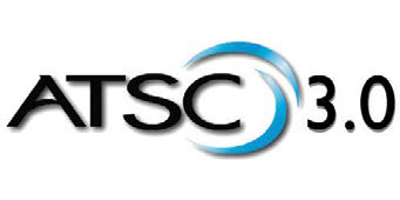All About ATSC 3.0 (Part 3 of Many)
WASHINGTON—I am pleased to report considerable progress on moving key elements of ATSC 3.0 forward toward standardization. In the previous installment of this blog, I reported that documents describing the core of the ATSC 3.0 physical layer had advanced to the first approval level, which we call Candidate Standard (CS). As of this week, four more documents have been elevated to CS and published on the ATSC web site.

ATSC 3.0 will be documented in a suite of standards. The top level “parent” standard (A/300) will describe the overall system and state what must be included to create an ATSC 3.0 system. A/300 will point to a group of about 20 standards for all of the core building blocks that make up ATSC 3.0.
All ATSC standards have A/xx document numbers. For ATSC 3.0, we are beginning with A/300 and moving up from there.
Progress on Multiple Layers
The physical layer is the foundation of any wireless communications system. The two ATSC 3.0 physical layer CS documents are:
- A/321, “System Discovery and Signaling”
- A/322, “Physical Layer Standard”
Additional physical layer documents are under development.
The ATSC 3.0 physical layer allows television broadcasters to choose from a wide variety of transmission parameters so that each station can tailor its signal to best serve its local market by providing the combination of services and coverage area best suited for the market and its terrain. The system will allow high-capacity, low-robustness modes and also lower-capacity, high-robustness modes in the same transmission. This flexibility means that broadcasters can choose to offer both 4K Ultra HD broadcasts running side-by-side with robust mobile broadcasts to handheld devices. Transmission technologies can be selected for various “use cases” such as Single Frequency Networks, Multiple Input/Multiple Output channel operation, channel bonding and more; well beyond a single transmitting tower.
The physical layer for ATSC 3.0 starts every physical layer frame with a bootstrap signal that provides synchronization and signals basic information about the technology used in the physical layer itself—major and minor version, which enables graceful evolution of the physical layer itself in the future—as well as an Emergency Alert Service wake up flags, system bandwidth, time to the next frame of a similar service, and the sampling rate of the current frame. This bootstrap is extremely robust, able to be received in very challenging radio frequency conditions. The bootstrap is followed by a preamble, which carries the information needed to define the payload framing, including the information required for the receiver to acquire the data frame. The remainder of the physical layer structure is the data payload itself.

By taking advantage of recent advances in modulation, coding, error correction, constellations, and multiplexing, the ATSC 3.0 physical layer offers a wide range of operating performance points in the BICM (bit interleaver, coding, and modulation) chain that is very close to the Shannon Limit, the theoretical limit for the amount of information that can be carried in a noisy channel. The ATSC 3.0 physical layer offers broadcasters the capability to operate in a robust/lower bit-rate fashion for mobile and deep indoor services and/or a less robust/higher bit-rate fashion for services to large fixed screens in the home. If desired, the broadcaster can also operate with a simultaneous mixture of types of services using either Time Division Multiplexing (TDM) or Layer Division Multiplexing (LDM), or both. This allows broadcasters to construct their broadcast emission to support a variety of different business models and to experiment with new ones.
Work continues on the other parts of the suite of ATSC 3.0 standards as well. Four additional CS documents have just been approved and published; they are:
- A/332, “Service Announcement,” which describes announcement of services in an ATSC 3.0 broadcast.
- A/334, “Audio Watermark Emission,” which specifies the audio watermark system for ATSC 3.0.
- A/335, “Video Watermark Emission,” which specifies the emission format for video watermarks for use within ATSC 3.0 broadcasts.
- A/338, “Companion Device,” which specifies the communication protocol between an ATSC primary device—the primary receiver used to present the primary content—and an ATSC companion device that communicates with the primary device to present related, supplementary content.
These four documents represent core elements of the Management and Protocols Layer in the ATSC 3.0 system.
It is expected that six more documents will be elevated to CS status or be at ballot before the end of the year.
It is important to understand the role of the CS stage in standards development because most, perhaps all, of the documents in the ATSC 3.0 suite of standards are expected to pass through the Candidate Standard phase on their way to completion.
A Candidate Standard is a document that has received significant review within a specialist group and is ready for review by a larger group of potential implementers. Advancement of a document to CS is an explicit call to those outside of the related specialist group for implementation and technical feedback. This is the phase at which the specialist group is responsible for formally acquiring that experience, or at least defining the expectations of implementation. It is expected that following the CS period, the document will continue along toward the standardization path, which involves, typically, two additional ballot stages.
Get Involved
ATSC 3.0 represents a significant step forward in capabilities for a broadcast television system. It provides a set of flexible capabilities for broadcasters that enable new services and new business cases. The concepts of flexibility, extensibility, and scalability are in the core of the system and will allow graceful evolution over a long period of time.
Work in ATSC is open to all with a direct and material interest in the work. If you are interested in participating in any of the ongoing work of the organization, please contact the author. All ATSC Standards, Candidate Standards, and Recommended Practices can be downloaded at no charge from the ATSC Web site at http://www.atsc.org.
Also see...
December 7, 2015
"10 More Technologies Move Toward ATSC 3.0 'Candidate Standard' Status"
Ten more standards in the ATSC 3.0 suite of standards—including video encoding, Internet Protocol transport, electronic service guides and closed captioning—are moving toward “Candidate Standard” status this month, the Advanced Television Systems Committee announced today.
October 2, 2015
"All About ATSC 3.0 (Part 2 of Many)"
The Technology Group working to develop ATSC 3.0 (TG3) has just approved the core physical layer specification as a Candidate Standard.
August 17, 2015
“All About ATSC 3.0 (Part 1 of Many)”
Please believe me when I say that work on ATSC 3.0 is not some abstract science project. This is the real deal.
Get the TV Tech Newsletter
The professional video industry's #1 source for news, trends and product and tech information. Sign up below.

